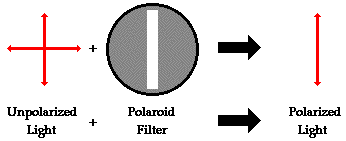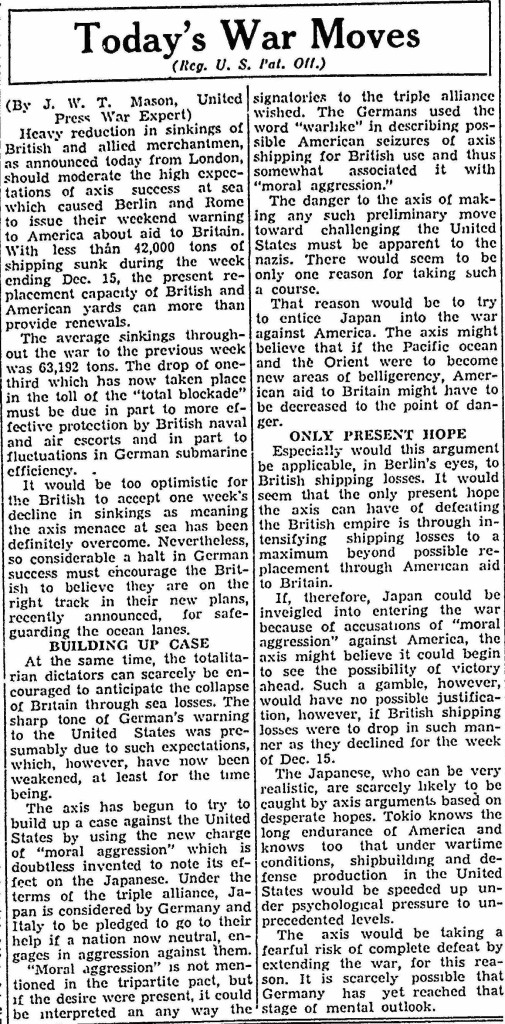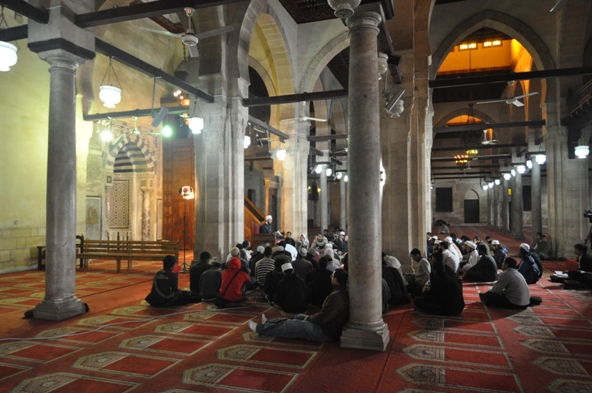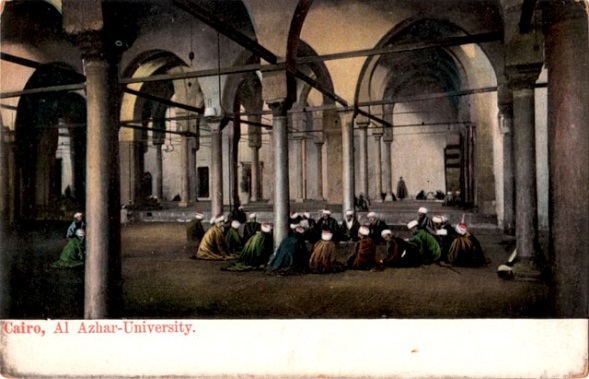Polarized light — pls review before final exam, Thurs
Sunday, August 13th, 2017[ by Charles Cameron — actually the exam is daily, ongoing — and we’re not scoring very high marks ]
.
Unpolarized light vibrates in any planes:
A light wave that is vibrating in more than one plane is referred to as unpolarized light. Light emitted by the sun, by a lamp in the classroom, or by a candle flame is unpolarized light. Such light waves are created by electric charges that vibrate in a variety of directions, thus creating an electromagnetic wave that vibrates in a variety of directions. This concept of unpolarized light is rather difficult to visualize. In general, it is helpful to picture unpolarized light as a wave that has an average of half its vibrations in a horizontal plane and half of its vibrations in a vertical plane.
Polarized light vibrates in only one plane:
It is possible to transform unpolarized light into polarized light. Polarized light waves are light waves in which the vibrations occur in a single plane. The process of transforming unpolarized light into polarized light is known as polarization.
The most common method of polarization involves the use of a Polaroid filter. Polaroid filters are made of a special material that is capable of blocking one of the two planes of vibration of an electromagnetic wave. .. In this sense, a Polaroid serves as a device that filters out one-half of the vibrations upon transmission of the light through the filter. When unpolarized light is transmitted through a Polaroid filter, it emerges with one-half the intensity and with vibrations in a single plane; it emerges as polarized light.
This works either way — so to speak, either vertically, or horizontally — though not, by definition, both at once. Ohh, and there’s paradox involved:
Read the whole lesson at The Physics Classroom: Polarization — and memorize, remember?
**
Ali Soufan notices polarization in our political sphere wrt events we label or do not label terrorist:
Big difference in how President Trump reacted to the London Bridge and #Charlottesville car attacks.
— Ali H. Soufan (@Ali_H_Soufan) August 12, 2017
NPR likewise:
When Is It "Terrorism"? How The Media Covers Attacks By Muslim Perpetrators https://t.co/KSI9oLlUi0
— NPR Politics (@nprpolitics) June 20, 2017
Tim Furnish sees this polarization as avoiding mention of Islamic influence when it is clearly present:
#Charlottesville driver's car was still accelerating when "terrorism" alleged. But shouting "Allahu Akbar" & killing folks never called that
— Dr. Timothy Furnish (@Occidentaljihad) August 12, 2017
And then there’s this:
Uproar over #CharlottesvilleKKK & Jew-hate, but you all yawned last week when it was Muslim imams calling for Armageddon against Jews https://t.co/dYDUCRNyYy
— SHIREEN QUDOSI (@ShireenQudosi) August 12, 2017
Sebastian Gorka told MSNBC
https://t.co/HIMMGEOxOP"..shouts Allahu Akbar as they're..stabbing a police officer, it’s..clear it’s not..case..the mafia robbing a bank..”
— I. Ryan (@EttasPlace) August 9, 2017
Gorka in full:
Sometimes an attack is unequivocally clear for what it is. When somebody shouts ALlahu Akbar as they’re stabbing a police officer, it’s pretty clear it’s not a case of the mafia robbing a bank, wouldn’t you say so?
Eh?
White House Official Gorka Claims Right Wing Attacks Are ‘Fake,’ but Data Show Something Different https://t.co/2rCas2fOKf
— Anthony Lemieux (@aflemieux) August 9, 2017
Vox is oppositely polarized to Gorka et alii:
Trump is quick to blame Muslims for terror attacks. He's slow when Muslims are the victims. https://t.co/gFH8Hv4srE
— Vox (@voxdotcom) June 6, 2017
As, indeed, am I.
**
Incientally, all you special ops types with cool shades:
For lightweight, functional shades that protect your eyes in any lighting situation, Oakley has designed the SI Flak Jacket. Featuring an innovative 8.75 base lens curvature for optimal peripheral vision, these sunglasses provide side eye protection as well as a maximal field of view. The stress-resistant O-Matter frame found in many Oakley tactical models is lightweight, ergonomic and will not succumb to the pressures of constant wear and travel. The Plutonite polycarbonate lenses fully filter out harmful UVA, UVB, UVC and blue light up to 400 nm for maximum sun protection. Oakley also has included an Iridium coating on the lenses which reduces glare in extremely bright light. For adaptability in any environment, the lenses are easily interchangeable. « less
Take heed:
Polarization has a wealth of other applications besides their use in glare-reducing sunglasses.
Like — in USian politics?
**
Okay, time for the test. Sample question:
Answer:
A. Referring to the above question, the glare is the result of a large concentration of light aligned parallel to the water surface. To block such plane-polarized light, a filter with a vertically aligned polarization axis must be used.












